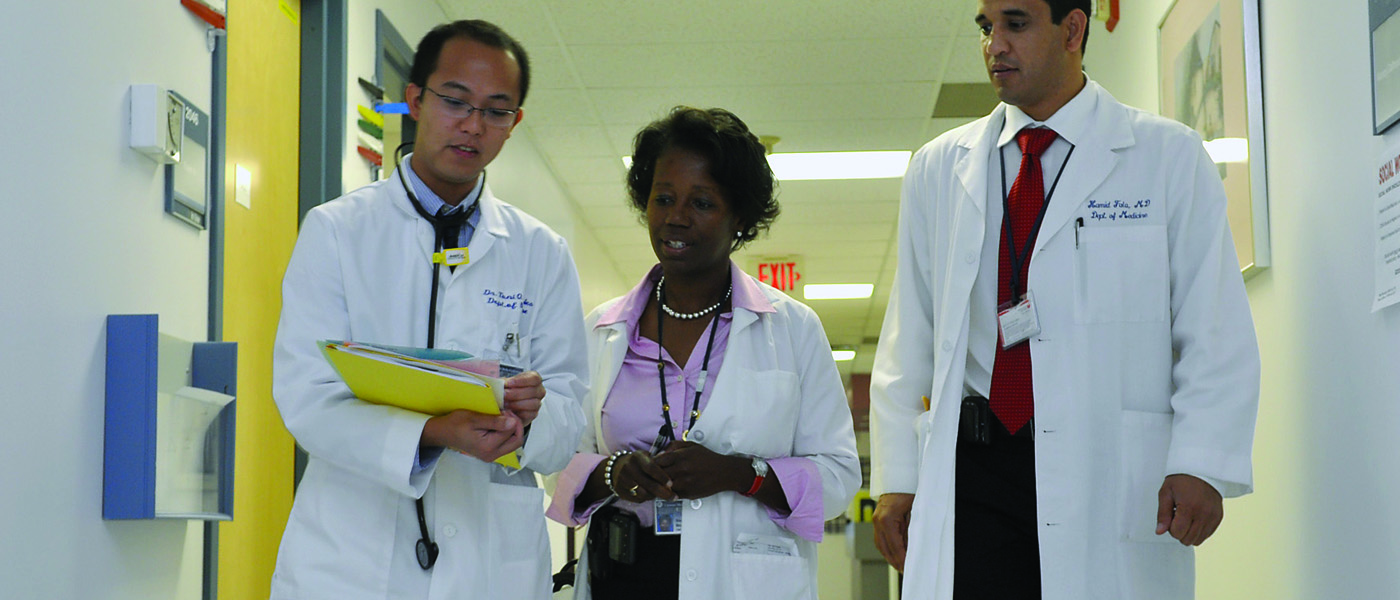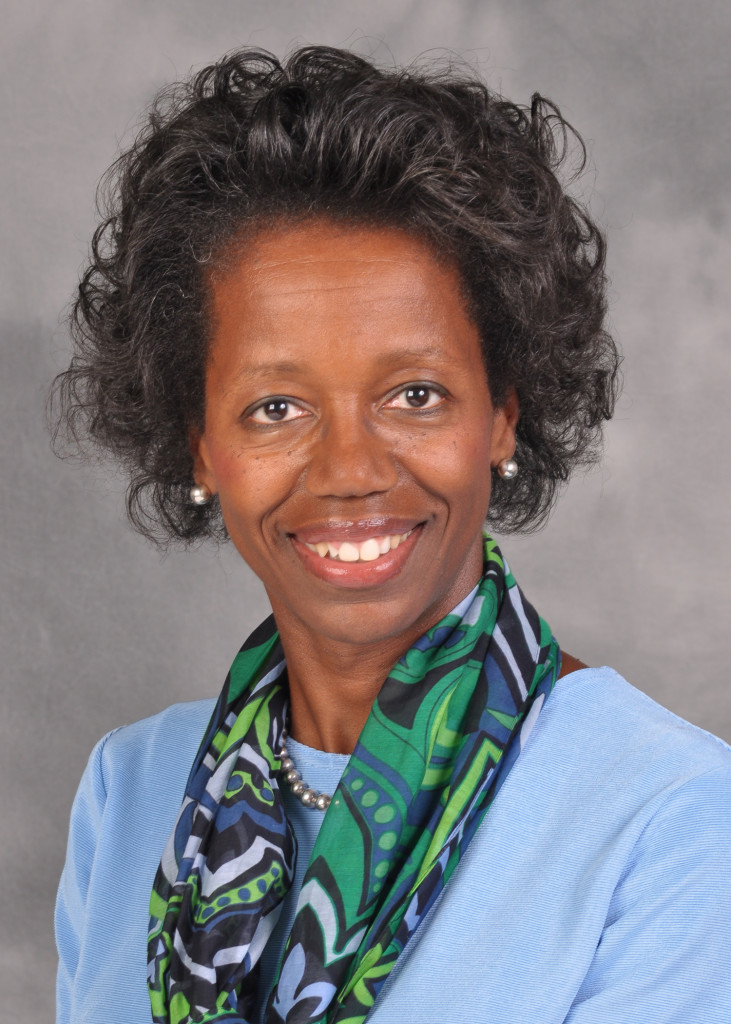Every week Grant Reeher, Director of the Campbell Public Affairs Institute at Syracuse University, leads a conversation with a notable guest. Guests include people from central New York – writers, politicians, activists, public officials, and business professionals whose work affects the public life of the community – as well as nationally-prominent figures visiting the region to talk about their work.
Grant Reeher hosts WRVO Public Media’s program “The Campbell Conversations” at 6 p.m. Sundays at 89.9 and 90.3.
Dr. Sharon Brangman is the division chief of geriatrics at Upstate University Hospital, where she practices geriatric medicine. She also directs the Geriatric Medicine Fellowship Program and Central New York’s Alzheimer’s Disease Assistance Center. She has served as president of the American Geriatric Society.
Grant Reeher (GR): Could you give me a couple important data markers or trends for the aging of the population in the United States?
Dr. Sharon Brangman (SB): Well, we are right now in the midst of a big increase in the people who are 65 and older. So we have the oldest of the baby boomers who are turning 65, at the rate of about 10,000 a day, and that has been going on for a couple of years. But we also have an amazing increase of people who are 85 and older, and that is actually the fastest growing segment of our population right now.
GR: Why are these trends so important for us to be thinking about?
SB: Well, as the older adults become a larger segment of our population, they use more health care resources. … Older adults are about 12 percent of the population, but they are using a proportionately larger percentage of the health care resources. They are over-represented in emergency rooms, hospital admissions and use of pharmaceuticals. When we are dealing with people, especially 85 and older, they often need help getting through the day. So they need more help with cooking, cleaning, driving, getting to the toilet, getting dressed, so that we find that those older adults often are using more health care resources.
GR: What are the differences between traditional medicine and geriatric medicine?
SB: Well, in traditional medicine, care is usually based on one organ system. So you would go to a cardiologist or a heart specialist, then you might go to a GI doctor, a lung specialist or maybe an orthopedic surgeon. And that doctor would look at that organ system or whatever that specialty might be.
In geriatrics, we tend to look at the whole individual. We take into account the different medical problems they might have, their role in the community, their functional status, their cognitive status. We often work as a team, so we have a nurse, a nurse practitioner, a social worker and other people who work with us, and they each have a perspective on the patient that is very important. And we are often not trying to cure a person. These are often people who have multiple medical problems and they are living with them over time.
We always take care of people, so we always say care versus cure. We are helping people live with multiple medical problems; we assess all the medicines that they are on and we try to focus on what we can do to keep them independent and enjoy the highest quality of life for as long as possible.
GR: At Upstate, you have worked a lot with medical students and with young doctors. What is the biggest thing that they don’t know that they need to learn when it comes to treating older adults?
SB: Well, I guess it’s a matter of fighting a lot of stereotypes, because not everyone has had exposure to grandparents. A lot of the information that we get about old people is in the media, and they are often portrayed as cranky or over-sexualized, or something that is just not realistic. And for our many medical students who are in their 20s, they may have the perspective that 40 or 50 is old. …
GR: (Laughs)
SB: … So I think it’s important for medical students to realize that there is still a lot of vitality in life when you’re 60, 65, 70, 80 and even 90. And that we may not be able to cure someone, but we can always take care of them. Sometimes medicines can have a dual edge to them; sometimes they can help, but sometimes the side-effects can be very detrimental to having a good quality of life. So I always help, or we help to teach, medical students to look at the whole person, to spend time and talk with them and to figure out what their medical problems are and help prioritize how we are going to approach them.
GR: What’s the biggest thing that the patients themselves need to learn about their own health care and their health as they move into this elderly category? What are the adjustments that they need to make?
SB: I think that it is important as middle-aged adults, young adults, to start thinking about how you would like to be when you’re older. I always say aging well starts with good pre-natal care, and I think we need to take some responsibility for our health. There is not a magic pill that makes everything go away, and many of the problems that happen as we age are based on our lifestyle choices that we have had throughout life. So I think taking a little responsibility, not going into a doctor’s office and expecting a prescription for every problem, and realizing that many things are not just going to disappear – that they need to be worked on and managed over time.
GR: Are there particular trends in the number of geriatric physicians?
SB: The numbers of geriatricians in this country are inadequate to meet the current needs, and it is only going to get worse with time. We train a little over 200 geriatricians a year in the whole country. And we probably need about 16,000. So that gives you an idea of how few we have.
GR: What drives this problem? I imagine that at least for the choice of specialty, money is a factor. What are the other things that are driving this mismatch?
SB: Well, it is really complex. Certainly the financing is probably a big piece of it because Medicare is the primary funder, and every year you hear in Congress about how they are cutting back on Medicare. They are reducing payment to physicians, and when you have a practice that is almost 100 percent Medicare, that has a big impact. So geriatricians are among the lowest paid. We have medical students who are graduating now with record amounts of debt. It is not unusual for a medical student to graduate owing $150,000 to $200,000 worth of debt.
Geriatrics takes time. I can’t push 10 80- or 90-year-old patients through my office in an hour. And so the amount of time that I spend to take good care of my patients I can’t make it up in volume, as some specialties might. So that’s another piece.
You can’t really cover your overhead. It’s very hard at times to pay all the bills and keep taking care of patients. And so if you are a medical student graduating with a lot of debt, you are not going to pick something that is not going to help you pay off your debt.
We also have other issues, and these are more cultural. We are not a very age-oriented society; we are very youth-oriented. And people are very hesitant to deal with older people because they think you are just going to deal with people who are old and dying, and that’s depressing. Everything is youth-related, and we want to make sure that we are dyeing our hair and getting rid of wrinkles and doing all these other things to deny that we are getting older. And I always say aging is not a disease, it is something we should all aspire to. But that message is just not transmitted in our culture. So, there are some cultures that do put value in aging, and unfortunately I don’t think that we do well enough. So a lot of people don’t see geriatrics as a career.
GR: I would think that emotionally, this would be a very difficult medicine to practice. For one, as you already pointed out, a lot of the patients are just not going to get better, and I imagine you see a lot of suffering, too. So what brought you to this specialization and what sustains you in it?
SB: Well I started to see that my older patients were being marginalized, and their needs were not being addressed. And I was working in a primary-care clinic as a general internist, and I found that my older patients wanted to maintain their independence. They uniformly said they didn’t want to be a burden to anyone, and at the same time I had a lot of younger people who were coming in who wanted a note to stay home from work. But I had older people with lots of medical problems who wanted to keep doing their own laundry and not bothering their daughter. So I started to think, “Wow, I really liked that dynamic.” They had great stories, small changes made huge differences in their quality of life.
So I actually went back and did my training in geriatrics. I was only in the second group at my hospital because it is still a relatively new specialty in our country. It’s been in England and Europe and other places for many years, but it is still relatively new. So I would say in the late 1980s it kind of got established in the United States.
Yes, it can be very difficult work, but I find it very rewarding because I can help people maintain a good quality of life. We can look and find out what is important to them and help them reach those goals, we can keep them comfortable and we can help them if they are suffering. Ironically, geriatricians are among the highest group of doctors in terms of job satisfaction in the country. We are usually either No. 1 or No. 2, sometimes changing off with neonatologists or dermatologists, but most geriatricians are very happy and very passionate about their job.
INTERVIEW: Dr. Sharon Brangman
By
Posted on

Dr. Sharon Brangman is the division chief of geriatrics at Upstate University Hospital










